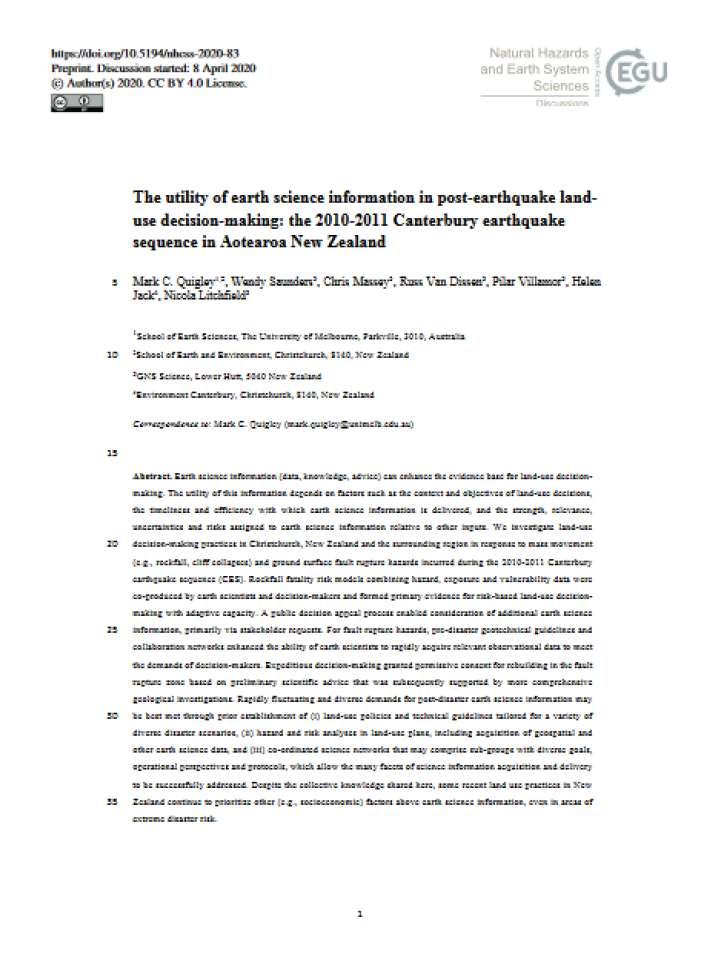The utility of earth science information in post-earthquake land-use decision-making: the 2010–2011 Canterbury earthquake sequence in Aotearoa New Zealand
This study investigates land-use decision-making practices in Christchurch, New Zealand and the surrounding region in response to the mass movement (e.g., rockfall, cliff collapses) and ground surface fault rupture hazards incurred during the 2010-2011 Canterbury earthquake sequence (CES). Rockfall fatality risk models combining hazard, exposure and vulnerability data were co-produced by earth scientists and decision-makers and formed primary evidence for risk-based land-use decision-making with adaptive capacity.
According to the authors, the lessons learnt from the CES are (pp. 21-22):
- Diverse operational perspectives and protocols are considered beneficial in enabling earth scientists to collectively respond to the diverse and time-compressed demands of this protracted natural disaster.
- Pre-event recovery planning would have saved considerable time and resource, which placed great pressure on responding earth scientists throughout the CES.
- City/district and regional governments implement risk-based planning for all natural hazards they may face.
- The current New Zealand national planning legislation (i.e. RMA) allows for national policy statements, environmental standards, or guidance to be developed. In the future, planning for hazards would benefit from one of these tools.
- Technical societies should develop guidelines for practitioners carrying out risk assessments, to ensure the methods adopted are transparent, follow international best practice, and can be readily reviewed and updated.
- Legislation for land use planning, building codes and standards, local government decision making and priorities, the national natural hazard insurer, and National Disaster Resilience Strategy should all be better aligned and, where practical, share common goals.
- In future events, funding for rapid acquisition of high utility geospatial datasets would ideally be made readily available so that these data can be rapidly acquired.
- In a post-event “crisis”, time-frames are condensed; therefore the best time for scientific information, including paleoseismic data, to be available for impending disasters is before the event.
- Although some CES-related literature has focused on community dissent and the ‘slow’ recovery in Christchurch, in reality, the need for patience, pragmatism, and multi-agency co-ordination are additional important factors to consider when analysing the recovery of Christchurch throughout a protracted earthquake sequence.
- The CES clearly brought into focus that the management of many natural hazards and risks fall largely on the shoulders of those tasked with the responsibility of administering the RMA (National Planning Legislation) and issuing resource and land use consents.
Explore further
